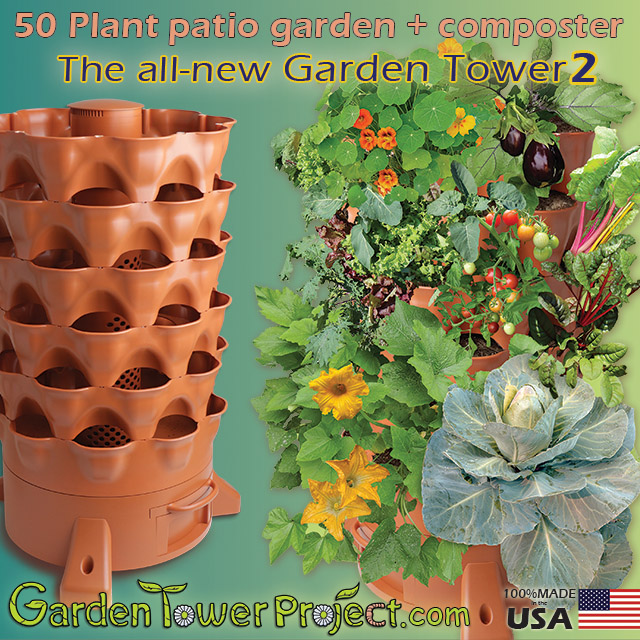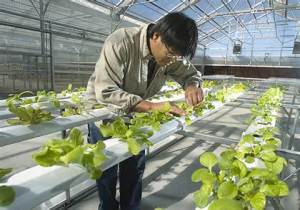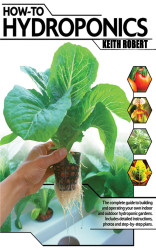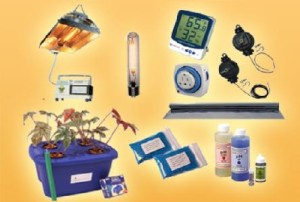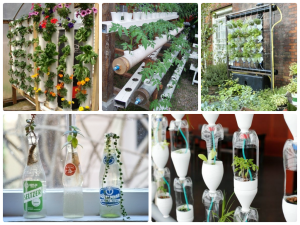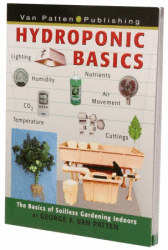Tips for Home Hydroponic Gardens
Best Outcomes for Home-based Hydroponics Garden
The conditions for plants are exactly the same regardless of whether you are cultivating a garden traditionally or with a hydroponics process. In hydroponics, the nutrients the plant would acquire from the soil are substituted by a growing medium that can be bought at gardening supply shops. The requirement for water and light is nevertheless just as crucial though. Light can appear from a natural source, a synthetic source or a mixture of the two. Based on the type of hydroponics system the process that your plant receives water will vary as well.
To be able to get hold of the very best outcomes from your home-based hydroponics garden, locate a south- facing window to provide the plants the best natural light. If this isn’t achievable, you can buy particular lights that are especially developed for plants. As an alternative of using a
fluorescent light, acquire what is known as a discharge light. This imitates the light the plants would normally acquire from the sun and will develop healthier and hardier vegetation.
Nutrients and Ph Levels
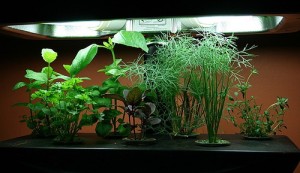
The water that the root system is growing in demands to be healthy water rich in nutrients
and this can be identified by examining the pH level (it ought to be a pH level of 6). The
pH level need to be checked on a frequent basis to guarantee it is not too acidic or alkaline. If
the reading is excessive, insert small quantities of vinegar and maintain re-testing until you obtain the reading you desire. If the water reading has a pH level that is too low, use the same
course of action to elevate the pH level only use baking soda instead of vinegar. You can also purchase pH Control Kits to maintain Ph levels from your favorite hydroponic supply store.
By maturing your crops with hydroponics, you will see speedier and more abundant progress.
The process that the vegetation obtain their nutrients is more productive and results in solid and
productive plants – whether they are houseplants, vegetable plants, or herbs.
Hydroponics – A Novel Blessing of Science
Hydroponics – The Science of Indoor Gardening
The expression hydroponics represents the process of cultivating plants in a nutritional solution instead of in soil. It’s an innovative process of growing plants in water which possesses dissolved nutrients. This method is also known as indoor gardening, tank farming and aquaculture.
plants in water which possesses dissolved nutrients. This method is also known as indoor gardening, tank farming and aquaculture.
Research has demonstrated the point that plant roots are in a position to take up the nutrients from the water even without the need of soil. The new method hydroponics is structured on the idea that plants can be cultivated without any soil whatsoever.
Professor Gericke of the University of California, Davis, is thought to be the father of hydroponics. Professor Gericke, in 1929, demonstrated his innovation by maturing tomato crops in water to a quite impressive size. The Professor coined the name hydroponics for the way of life of plants in water.
Practically any plant can be made to develop through hydroponics. Nowadays, the new methods of hydroponics gardening and hydroponics farming are becoming widely used.
Advantages of Hydroponics:
Hydroponics is a very helpful technique when there is deficiency of land, and it is expanding, incredibly beneficial and productive to farmers. The favorable elements of hydroponics are listed down below.
Hydroponics –
• Eliminates soil-borne disorders and weeds.
• Involves no soil tilling or plowing.
• Handy in land shortage; plants can be placed very near to each other.
• Can be done in compact areas.
• Remarkably productive; high produce, significant amount of food can be made from small spaces.
• Involves only a small amount of water in comparison to traditional gardening.
• Enables the output of good quality plants under regulated environmental conditions.
• Makes it achievable to grow plants throughout the year.
Future of Hydroponics:
The future of hydroponics seems to be particularly shiny. As plants are cultivated inside, they can be prepared to grow practically everywhere, in any circumstance and any climate.
It’ll make it achievable to cultivate crops in Antarctica. The methods such as hydroponics or aeroponics may make it practical to cultivate fresh vegetables and fruits in space in some near future.
Hydroponics – Growing Without Soil
What is Hydroponics?
The cultivation of plants with no soil is known as Hydroponics. It is commonly used to cultivate abundant, nutritious indoor vegetation and good high-quality vegetables, fruits and herbs. Indoor plants process nutrients as simple ions in the water. The nutrients in the soil melt in the water and the plant roots take them in. When the plants get sufficient nutrients, the soil is no longer necessary for the plant to survive. With the utilization of appropriate nutrients and the suitable synthetic light supply, an indoor gardener can accomplish remarkable results. A full controlled ecological farming system should have regulated light, temperature, water, CO2, oxygen, pH and nutritional solutions .
Hydroponics is easy and productive. On various days a pH test is completed and the water level is topped up. The nutrient is replaced every 7 – 12 days. To switch the light and garden on and off instantly, a timer is often applied. Within the different types of Hydroponics, deep water is the finest form because the roots are directly uncovered to the nutrient solution. “Deep Water” methods use a tiny air pump to maintain the solution well oxygenated.
Different Methods of Hydroponics
One more system of Hydroponics is the Ebb & Flow or Flooding & Draining systems. The root system and growing mediums like Rockwool are soaked at particular time periods. The Ebb & Flow system makes it less difficult to grow plants in small space. In Deep Water Culture (DWC), using the VIVOSUN New Arrival-DWC Hydroponic System Kit, the roots are left to fall down into an aerated nutritional solution. This solution is aerated with the help of common aquarium pumps and sir stones. The solution has to be topped up occasionally. Drip feeding is very much the same as Ebb & Flow, apart from that the pump provides a constant tickle of nutrients and water. The emitters operate 5 to 10 minutes every hour.
A different method of Hydroponics is Wick feeding, where the plant takes in water with the assistance of a wick that extends from the bottom of the plant container to a container of nutrient feed solution. By means of capillary action, the solution moves up to the plant through the wick. In Raft farming, plants are placed inside sheets of enhanced polystyrene with the roots clinging down through the holes. The sheet is subsequently floated in a shallow container of nutrient solution. In Nutrient film technique (NFT), the plants grow through light-proof plastic films positioned over shallow, softly sloping channels. The roots grow into thick mats with a thin film of nutrients passing over them. Aeroponics is a class of Hydroponics where the roots of a plant are suspended in a midst or fog of nutrient rich solution.
Hydroponics – A Better Choice
Diverse media are used for Hydroponics. Expanded clay, Coco coir, Vermiculite , Rockwool, Perlite and Oasis root cubes are some of them. Due to frequent issues of chemicals and other pollutants in the food source, people are looking for a better choice. Hydroponics fits the qualification adequately.
Hydroponics Q&A: The Basics of Hydroponics
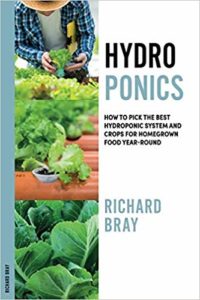 What is hydroponics?
What is hydroponics?
Hydroponics is typically described as “the cultivation of plants in water.” Nevertheless, research has shown that different media can sustain the development of the plant. Because of that, the definition was extended to “the cultivation of plants without the need of soil.”
* What is aeroponics?
Aeroponics is considered as a hydroponic process where root bases of the plants are constantly or discontinuously nestled in a habitat soaked with fine droplets such as mist or aerosol of some fertilizing solution.
* What are the benefits of hydroponics?
The most evident benefit of hydroponics is its ability to manage the plant-growing surroundings. Additional advantages of hydroponics are:
• Limited supply of adequate water
• Prevent high labor expenses than the conventional cultivation process
• No demand for high expenses of soil fertilizer
• Assurance of plant output
* Are there diverse types of hydroponics?
In fact, there are numerous different kinds of hydroponics. The key categories are either media-based or water culture.
Under media-based hydroponics are the following:
• Flood and drain
• Drip system
• Wick Feeding
On the other hand, water culture hydroponics include:
• Raft Cultivation
• Nutrient film technique
However, various other techniques are categorized as the water-culture category.
* What amount of time does a hydroponic garden demand?
Establishing a hydroponic garden calls for time, dedication and determination. It demands a great deal of time if you wish to ensure that the plants are in good shape at all times. It will additionally take you a bit longer to merge the nutrient solutions. Every once in awhile, it is essential that you take a look on the pest infestations or illnesses that might harm your plant.
The time aspect also will depend on the type of hydroponic garden you grow as well as how massive and sophisticated it is. The time element will also depend on the type of vegetation you want to cultivate.
* Can I cultivate hydroponic plants inside?
Absolutely, growing hydroponic plants can likewise be done in your interior garden. You just need to sustain a temperature that varies from 60 to 80 degrees Fahrenheit. There must be an adequate source of water as well. You’ll need to manage the nutrient solution that you will implement everyday.
* What should I use for a lighting source?
Light is equally one of the essentials for plant growth in a hydroponics system. The majority of the cultivated plants need sunshine. On the other hand, when you grow plants inside, manufactured light such as bulb light is essential. The power of the light that you are going to apply must be substantial but ensure that it does not drastically elevate the temperature.
* Do hydroponic plants develop more rapidly than the plants growing in soil?
It will vary on how you handle the methods that you are going to utilize in hydroponics. If the techniques are implemented correctly, the progress of hydroponic plants will be speedier than those grown in soil and the period could even be lengthier. It will also differ with the types of plants. There are plants that grow more rapidly with hydroponics but there are also those that tend not to.
How to Grow Flowers and Vegetables with Minimal Time and Effort
The Benefits of Hydroponic Gardening
Were you aware that you can even now grow your own lovely flowers, herbs and vegetables, without the need to spend numerous hours every single week attending to your garden?

One of the greatest problems a lot of gardeners confront is never having sufficient time to manage their garden. There’s constantly weeds to take out, pesky insects and other unwanted pests to handle, and steps to take to keep plants becoming infected. Even watering the garden on a daily basis can be very time consuming, except if there’s an automated sprinkler system set up.
If you desire a garden but only have minimal time to maintain it, hydroponics is a excellent option. Hydroponics gardening has many time-preserving added benefits over traditional gardening solutions.
A few of these advantages are:
1. No weeding necessary.
With hydroponics gardening, the plants are cultivated in a solution of nutrients absorbed in water as a substitute of soil. You don’t have to be concerned about weeds popping amongst your plants, since soil isn’t used.
2. Much less problems with infestations and diseases.
When growing hydroponically, you have a smaller amount of the common problems with pests such as slugs, snails and caterpillars attacking your vegetation.
While the nutrient solution of your hydroponic garden will have to be replaced frequently, this only takes a small portion of the time ın comparison to traditional gardening maintenance – eg. greenhouse gardening, where soil has to be changed between crops to reduce disease.
3. You don’t need to spend time watering your plants.
Plants produced in a hydroponic garden have an unrestricted supply of water. You certainly have no need to be troubled that your plants are getting excessive or too little water.
4. Say farewell to digging your garden.
Processing of a traditional garden requires loosening the soil to add oxygen for the plant’s roots to draw out. One more time, as soil isn’t applied with hydroponics, this implies one less time consuming job for you to perform.
Plants produced hydroponically draw out oxygen from the nutrient solution via their roots. The oxygen can quite speedily be used up, so it’s important that it’s substituted. The way it’s replaced will depend on on which system is applied. The most usual hydroponic system is the passive system, which works by using an aquarium bubbler to put oxygen back again into the solution.
Plants can be produced rapidly devoid of all the concerns of typical gardening. Despite the fact that a hydroponics system can take some time to be established, you’ll find it’s worthwhile the effort.
Hydroponics Basics By George F. Van Patten

Hydroponic Basics by George F. Van Patten
- Hydroponic book
- Written by George Van Patten
- Paperback
- 80 pages
- Length: 0.2
- Width: 5.6
- Height: 4.2
